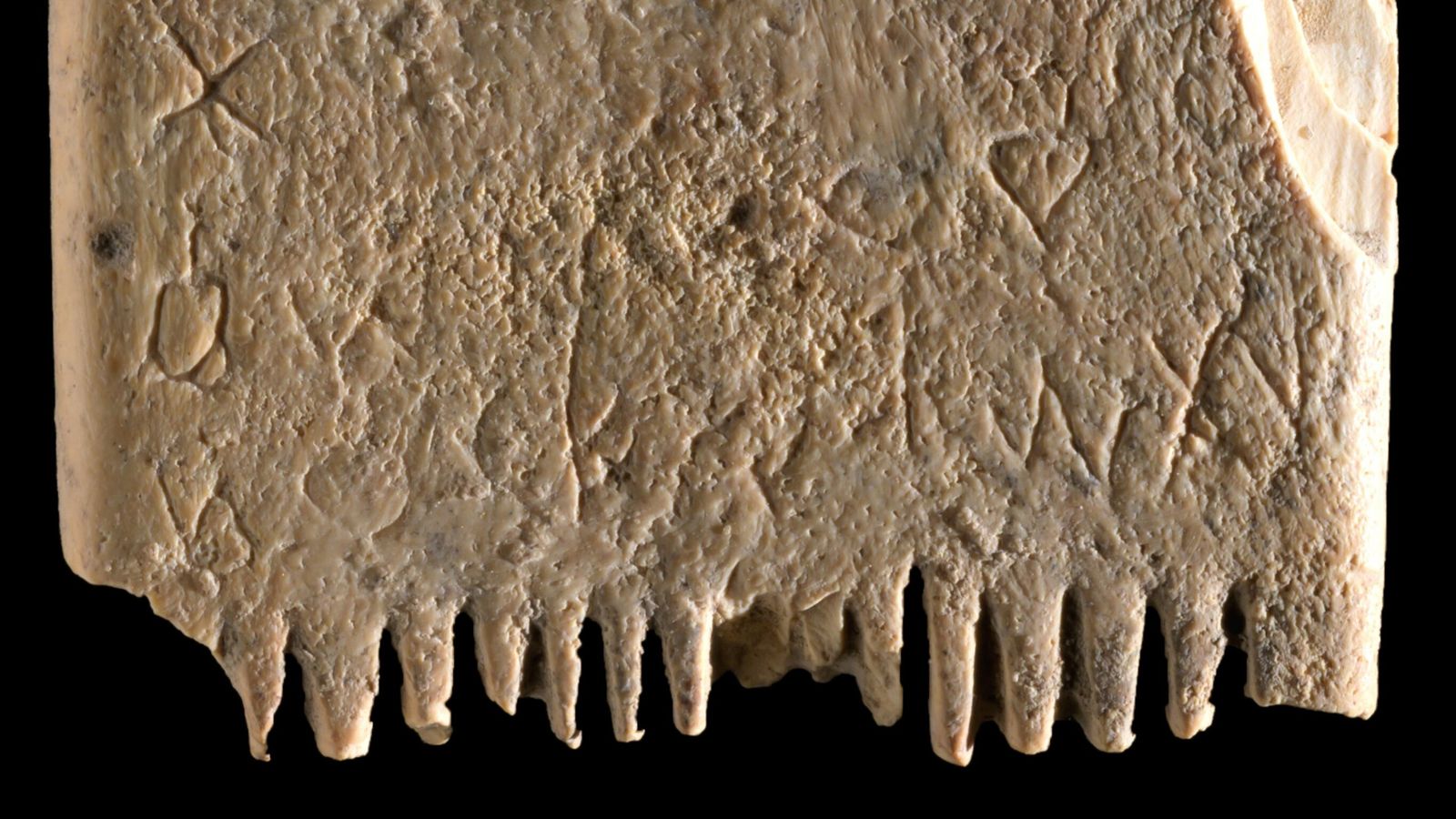From food getting stuck, to that awkward moment your shaver runs out of battery halfway through, there are downsides to having a beard.
But if it makes you feel any better, the facial hair-related issues of yesteryear sound much worse.
In a remarkable discovery, researchers have translated the first sentence ever written in the ancient language of Canaanites, the people of lands thought to have included parts of Israel, Palestine, Lebanon, Syria, and Jordan.
Dating back to around 1700 BCE, the inscription upon a small ivory comb reads: “May this tusk root out the lice of the hair and the beard!”
The team who found it at Tel Lachish in Israel say it’s a spell to eradicate beard lice.
“This is the first sentence ever found in the Canaanite language in Israel,” said Professor Yosef Garfinkel, from the Hebrew University of Jerusalem.
“This is a landmark in the history of the human ability to write,” he added.
Ten possible jobs of the future – and why Britain may struggle to fill them
Instagram influencer Hushpuppi, who tried to steal £100m from Premier League club, jailed in US
GTA 6: Huge leak of next Grand Theft Auto ‘won’t influence game’s development’
Evidence of how alphabet was used 3,700 years ago
Professor Garfinkel and his team, including colleagues from Southern Adventist University in the US, say the comb originated from an elephant tusk.
While it was excavated back in 2017, the engraving was so shallow that it was only noticed during post-processing earlier this year and deciphered by Semitic epigraphist Dr Daniel Vainstub.
The inscription is made up of 17 Canaanite letters and seven words.
“There are Canaanites in Ugarit in Syria, but they write in a different script, not the alphabet that is used till today,” Professor Garfinkel explained.
“The Canaanite cities are mentioned in Egyptian documents, the Amarna letters that were written in Akkadian, and in the Hebrew Bible.
“The comb inscription is direct evidence for the use of the alphabet in daily activities some 3,700 years ago.”
Anything familiar about the comb itself?
The comb is only 3.5cm by 2.5cm, and has teeth on both sides.
While the teeth themselves are broken, their bases are still visible, and the central part is quite eroded – possibly because of the pressure of fingers holding it during treatment.
Given its material, it was likely an imported luxury item – possibly from Egypt.
As parents of small children may well notice, its design is not dissimilar to the fine-tooth combs used today to treat head lice and nits.
Using a microscope, the researchers took high-resolution photos of the comb, and actually found some remains of head lice still present.
They say that, given the presumed origins of the comb, it’s a sign that lice were even a problem among the upper classes of society.
Lachish was a major Canaanite city state, and the second most important city in Judah, the biblical kingdom.
To date, 10 Canaanite inscriptions have been found in Lachish, more than at any other site in Israel – but until now never in a full sentence.






